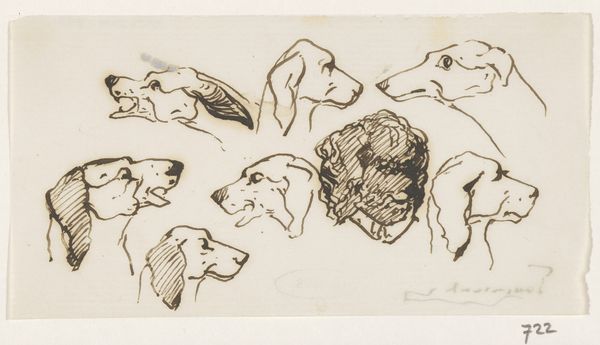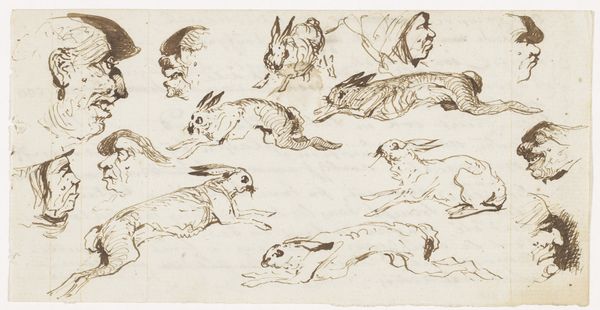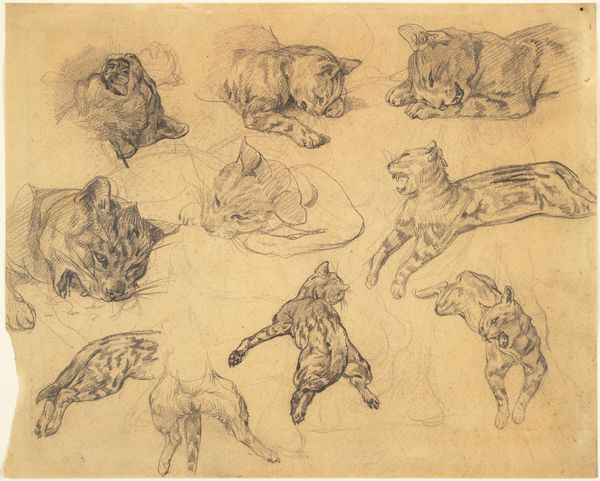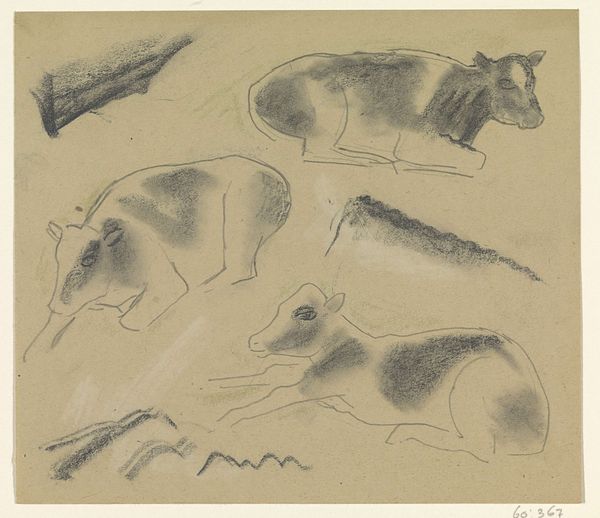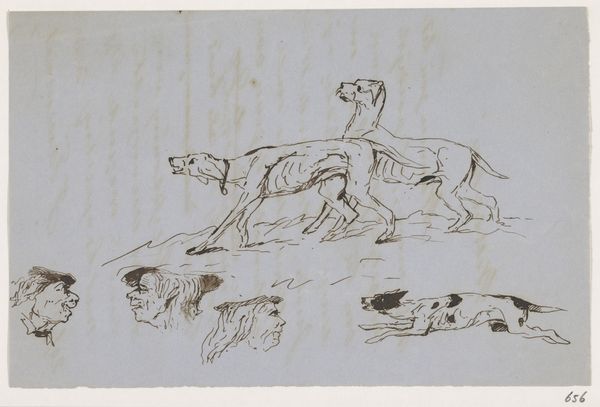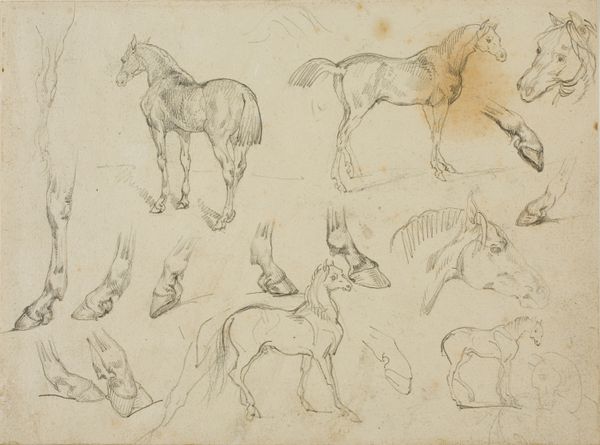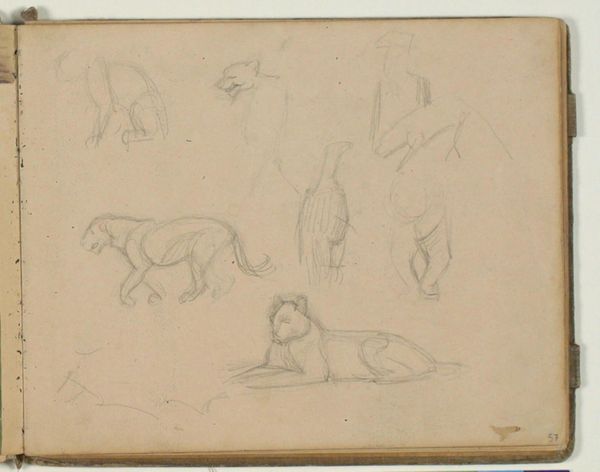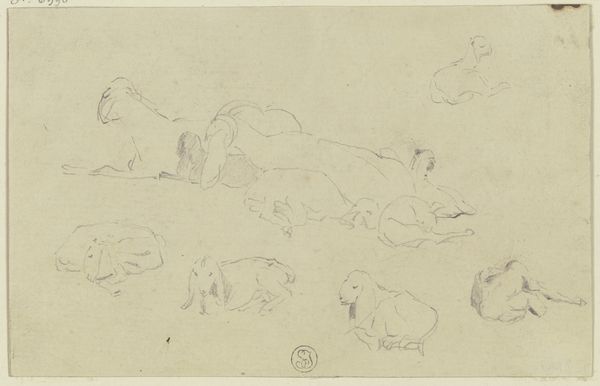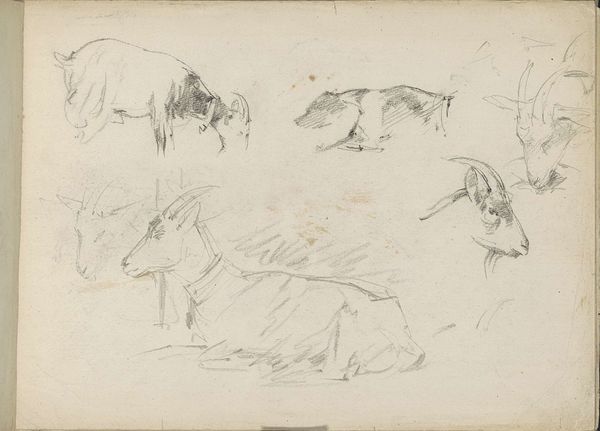
drawing, charcoal
#
drawing
#
16_19th-century
#
figuration
#
romanticism
#
charcoal
Copyright: Public Domain
Curator: Before us, we have Eugène Delacroix's "Studienblatt mit Löwen und Tigern," dating from about 1826 to 1828. It's a drawing rendered in charcoal. Editor: It feels so immediate, so raw. A page of quick, almost nervous studies, trying to capture something fleeting. A glimpse into the artist's process, all these resting, pensive felines. Curator: Delacroix was fascinated by exotic animals, particularly big cats. This interest aligned with the broader Romantic movement’s fascination with nature and the power and drama of the animal kingdom, often contrasted against the burgeoning Industrial Revolution. Zoos, like the Jardin des Plantes in Paris, made such studies much more attainable. Editor: And they become symbols, don't they? These powerful, caged beasts reflecting perhaps the anxieties of a changing world, of repressed desires struggling against social constraint? I'm thinking about how representations of animals have long served to reflect our own inner turmoil, anxieties and aspirations. Curator: Absolutely. Consider Delacroix's visits to England, around the same time he composed this piece. There, he became increasingly interested in artists such as Rubens, whose handling of colour and dramatic composition profoundly influenced him. Delacroix may have been creating this work, studying, perfecting his hand to tackle a much grander scene later in his career. Editor: It speaks to power, that's undeniable. The latent energy in these resting forms, that feeling of barely contained strength... It's compelling to see such potent creatures in a state of repose, a moment of quiet contemplation. But it is difficult to consider the violence that comes with romanticising colonised nature. The exotic is thrilling, but often erases complex realities of exploitation. Curator: Indeed, that is an ever-important layer in considering Delacroix, particularly. The art world in 19th-century Europe was certainly shaped by—and, at times, complicit in—colonial ventures and ideologies. His images played into fantasies of exoticism. Editor: Looking at this sheet, with its mix of focused observation and almost frenetic energy, it's a powerful reminder that even the most celebrated images need to be viewed critically, asking who gets to create these narratives and who gets erased in the process. Curator: A productive lens through which to study any work on view at the Städel Museum, I must admit! Editor: Absolutely! A lens that transforms viewing into something active.
Comments
No comments
Be the first to comment and join the conversation on the ultimate creative platform.
